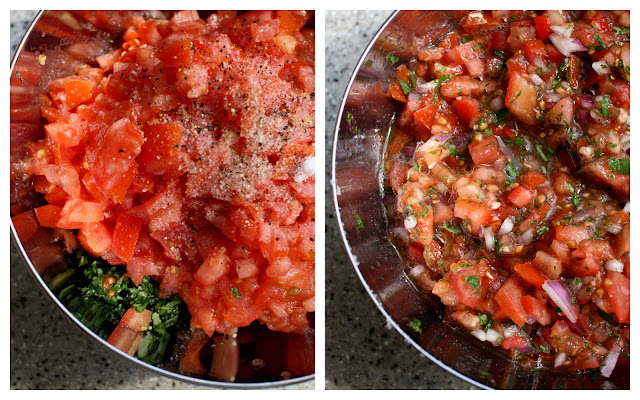Guys! Big news.
I found roma tomatoes on the vine at the market this week. What, you thought I was going to make some other sort of announcement?!
Seriously though, if you’re in Guangzhou, put on your shoes now and run to your nearest wet market, I want to know if you find them, too.
I bought a couple pounds worth, a total impulse purchase, but one that was far wiser than other impulse purchases I’ve made in the past (read: Richard Nichols pants, books on how to code CSS, a dog). The tomatoes were so perfectly ripe that I almost refrained from cooking them. Almost. I decided instead to give them a nice slow go in the oven. Slow roasting tomatoes creates an extra flavorful tomato that is ten times tastier, and a perfect compliment to summer pastas or salads…or simply slathered on a piece of crunchy toast.
In my case, I was looking forward to creating some breakfast meals in my new cast iron skillet pan. The tomatoes are sitting in my fridge now, ready to dance with some potatoes or eggs. I’ll let you in on how that works out, sometime in the next few days…
Slow Roasted Tomatoes
Ingredients:
- 1-2 lbs. small tomatoes (cherry tomatoes, roma tomatoes, etc)
- Extra Virgin Olive Oil
- Salt and Pepper
- Dried Herbs (Rosemary, Thyme, Oregano, Parsley, or Sage)
Directions:
- Cut tomatoes in half. Sprinkle with a generous helping of kosher salt and freshly ground black pepper, and whatever dried herbs please you- in my case, I used oregano and rosemary. Peel and crush a few cloves of garlic and toss into the pan. Douse with a good amount of olive oil, enough to coat the tomatoes and then some.
- Roast at 275 degrees F for 2 hours. Tomatoes should be shriveled but still moist. Allow to cool to room temperature, and store in a air-tight container along with all the extra juices, olive oil, and garlic.











